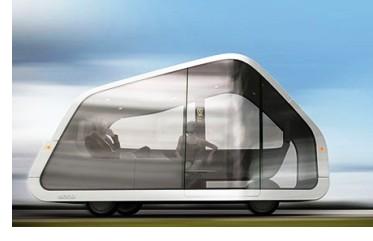As the development of driverless cars gathers pace, Audi has applied for an autonomous driving permit from the state of California – a licence which costs the car company $5m in surety bonds for each vehicle they test on public roads.
The multi-million dollar guarantee should not be taken as an indication that the endeavour is risky – a number of prototype cars able to negotiate roads without any input from a driver, including one by Google, have already completed many thousands of testing on public roads in California. The requirement for bonds as proof of insurance cover simply forms part of a range of new regulations that govern the testing of automated driving on the state’s roads that took effect this week.
The research being carried out by Audi differs slightly from the Google’s project because it is aimed at an automated piloted driving system for motorway traffic conditions. According to Audi, the technology could be offered on its cars within five years.
“Audi is a driving force behind the research taking automated driving from science fiction to pre-production readiness,” said Scott Keogh, President, Audi of America. “Obtaining the first permit issued by the State of California shows that we intend to remain the leader in this vital technology frontier.”
Search ‘driverless car’
Google’s early driverless prototype combined its own search engine mapping with hybrid engine technology to produce a Toyota Prius able to drive itself.
The autonomous car relied on an array of cameras and a roof-mounted laser scanner to negotiate road conditions.
The Google cars have safely driven over 100,000 miles in testing on real roads.
The technology heralds a shift from a driving infrastructure to a riding infrastructure that will have significant environmental benefits for society.
How soon before all cars drive themselves?
 Driverless cars are not only technologically possible but inevitable. The technology demonstrated by Google and Audi marks a significant development over the driver aids already fiited to cars such as Volvo’s Collision Warning with Full Auto Brake system and has proved itself in real-world conditions.
Driverless cars are not only technologically possible but inevitable. The technology demonstrated by Google and Audi marks a significant development over the driver aids already fiited to cars such as Volvo’s Collision Warning with Full Auto Brake system and has proved itself in real-world conditions.
Any resistance to autonomous cars that reduce the ‘driver experience’ may be overcome by the features that these vehicles will potentially include.
Google phone design company, Mike and Maaike recently unveiled its vision of personal transport in 2040.
The fully-autonomous electric concept car is unencumbered by a large engine; batteries underneath the seating and floor are boosted by solar panels on the roof and hub-mounted motors. Codenamed ‘atnmbl’, the design is smaller than the average saloon and yet features a wrap-around seven-seat sofa, table and television.
Paul Bunting
I am hoping Volvo will eventually produce a conversion kit which will make my 2011 V70 drive itself. Then I can get to Northumberland sitting on the back seat reading my newspaper and drinking my coffee. I cannot drive myself there from Worthing because it takes me 3 days to recover from driving around the M25 before I can sleep again. The M25 is slow, extremely congested and on a curve often in a cutting so you cannot see ahead or whether there is an escape slip road before the next inevitable hold-up. It does my head in. A cab driver who gave me a fare home said he used to be a lorry driver round the M25 so I said I guess he got used to it but he said it still did his head in.
Chris Beazer
Google’s early driverless prototype combined it’s own search engine mapping with hybrid engine technology to produce a Toyota Prius able to drive itself.
When will authors learn to spell? (it’s used to mean “belonging to it” when in fact it means “it is”).
Yannick Read
Thank you for highlighting the typo, which has now been corrected.